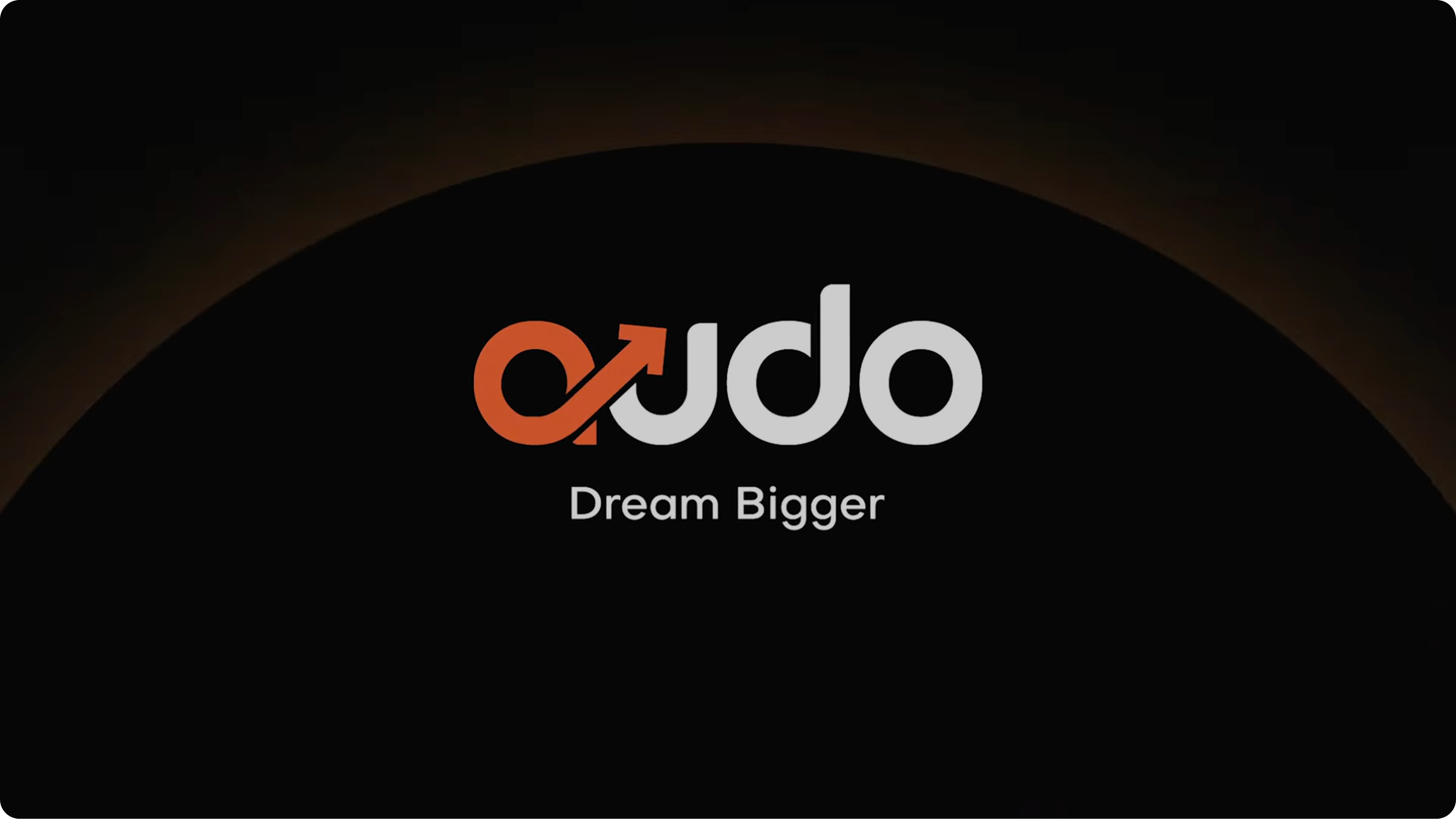ROLE
TOOLS
DETAILS
As part of Audo’s founding design team, I worked on the initial product experience for their AI-driven career concierge dashboard. The goal was to translate Audo’s ambitious vision—empowering people to navigate the future of work through personalized guidance, skill development, and job matching—into a clear, engaging, and scalable product.
Problem Statement
Audo needed to define how users would first encounter and understand its platform. The challenge was to design an experience that communicated the brand’s mission while delivering tangible value to three key groups:
- Career explorers needed clarity on what Audo is and how it could support their unique goals.
- Job seekers wanted actionable, personalized career guidance rather than abstract suggestions.
- Early adopters expected a seamless, trustworthy experience that built confidence in a new brand.
Impact
Without an initial product design, Audo risked:
- Confusion around its mission and value proposition.
- Weak engagement and low adoption at launch.
- Difficulty building trust with both users and investors.
- Lack of differentiation in a crowded career-tech space.
Opportunity
Designing Audo’s first product provided the chance to:
- Establish a distinctive brand and visual language rooted in accessibility and energy.
- Create a seamless onboarding flow that quickly connected users with AI assessments and tailored career paths.
- Drive engagement with upskilling courses through clear, actionable recommendations and learning resources.
- Offer new AI tools in ways that ensured equal access and equitable results.
- Build the design foundation for a platform that could evolve alongside user needs.
User Research to Shape Audo’s Product Vision
I conducted early-stage research to understand how users approach career exploration and job seeking, ensuring the platform’s design and functionality aligned with real needs.
User Interviews with Career Switchers
Surveys with Entry-Level Job Seekers
Competitive Landscape Audit
Onboarding Flow Testing
Information Architecture Card Sorting
Usability Walkthroughs of Wireframes/Prototypes
Observations I Gathered
Clarity Builds Trust
Onboarding is Critical
Actionable Next Steps Drive Retention
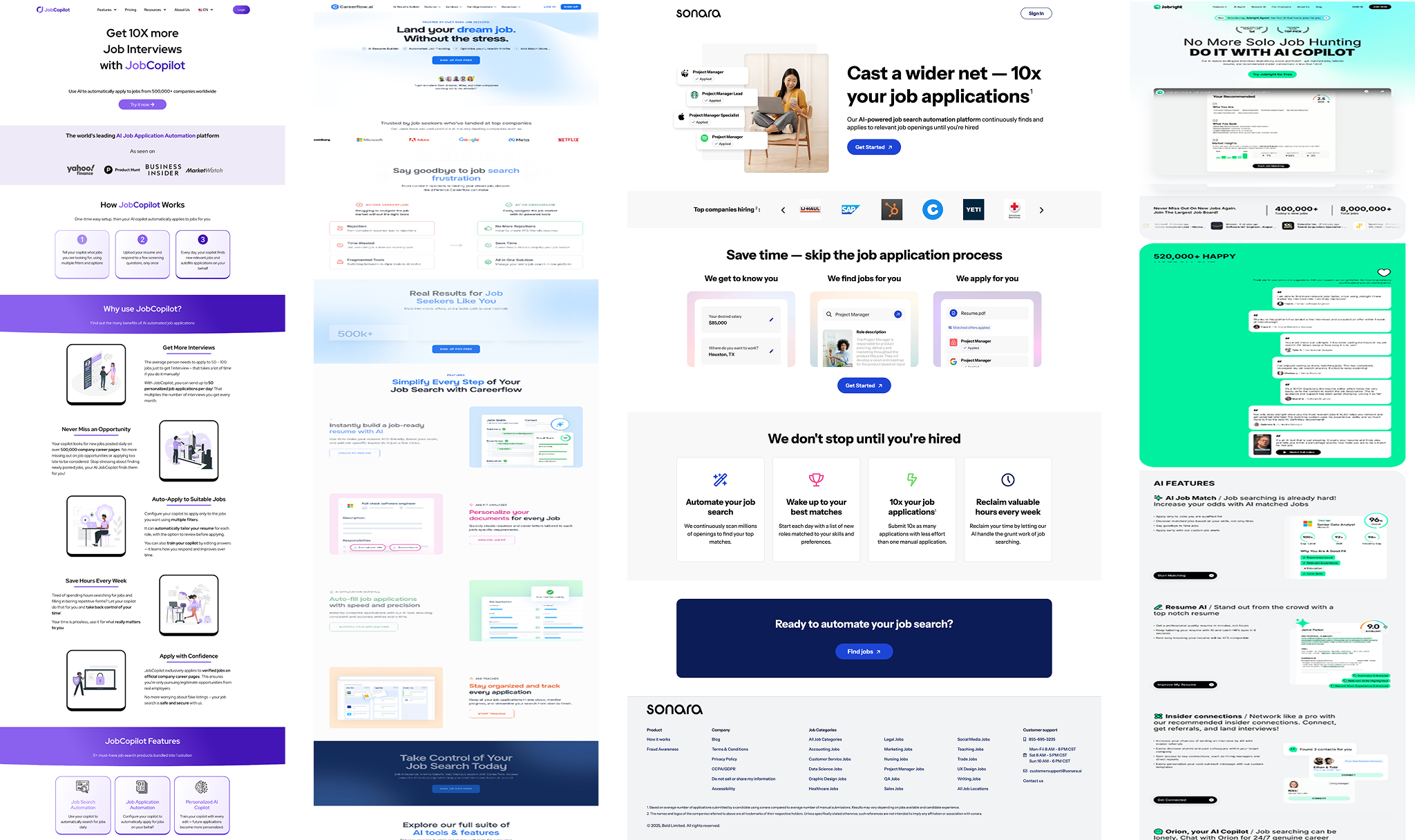
I evaluated career platforms’ navigation, assessment tools, and mobile experiences to understand market standards and identify gaps where Audo could stand out.
Competitor Analysis
We wanted to ensure that Audo’s career design platform offered a distinct value proposition while addressing gaps left by existing tools.
We analyzed leading career platforms, job boards, and skill-learning apps. We focused on how they guide users through career exploration, skill matching, and preparation for resumes and interviews—while identifying where Audo could differentiate through a more human-centered, design-driven approach.
Guided Career Pathways
Interactive Career Tools
Contextual Skill Insights
Preparation Resources
Working with educational experts, professional recruiters, and the Audo AI development team, we created user-centered content structures aligned with Audo’s mission of empowering individuals to find meaningful careers through AI-driven guidance.
Business Strategy Alignment
Trustworthy & research-backed – Ground advice in verified labor market data and expert insights.
Action-oriented – Provide practical next steps (skills to learn, jobs to explore, interview prep) rather than abstract guidance.
Distinctly Audo – Deliver content in a modern, playful, and motivating voice that reflects Audo’s identity.
Content Structure Approaches
Problem/Solution – Frame common user challenges (e.g., no experience, career change) and provide actionable pathways.
Feature/Benefit – Highlight Audo tools (AI career quiz, resume builder, interview coach) and their direct user benefits.
Comparison – Help users weigh different job paths, industries, or skill programs.
Implementation
Hierarchical organization – Structure dashboards and modules with clear progressions for intuitive navigation.
Detailed outlines – Create templates for each module (quiz, resume, interview prep, career paths) to guide development and maintain consistency.
Wireframes & Prototypes
To lay the foundation for Audo’s product design, I began with wireframes that moved from quick paper sketches into shared Miro boards. This collaborative stage brought together AI developers, content strategists, and executive leadership, allowing us to align on structure and flow before any pixels were pushed. By iterating as a group, we ensured that every screen reflected both user needs and the broader mission of helping people feel confident in their career journeys.
To lay the foundation for Audo’s product design, I began with wireframes that moved from quick paper sketches into shared Miro boards. This collaborative stage brought together AI developers, content strategists, and executive leadership, allowing us to align on structure and flow before any pixels were pushed. By iterating as a group, we ensured that every screen reflected both user needs and the broader mission of helping people feel confident in their career journeys.
.png)
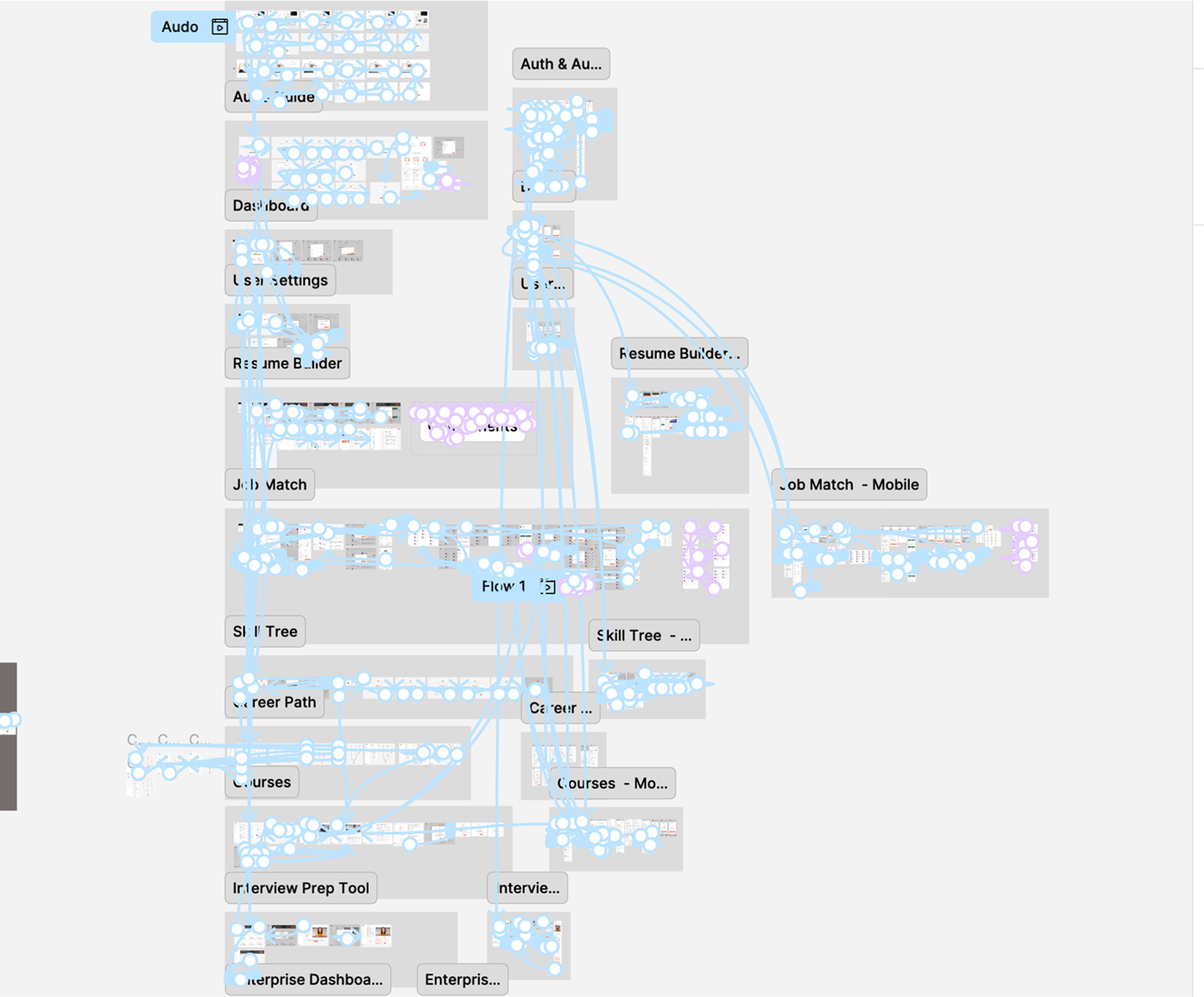

Design Handoff
After validating the low-fidelity flows, we built high-fidelity prototypes in Figma, incorporating Audo’s visual language and ensuring every element, including buttons, forms, typography, and icons, was clearly defined. To make development seamless, we produced detailed design notes specifying component behavior, interaction states, and responsive layouts. These specifications were compiled into structured documentation that served as both a design reference and a roadmap for implementation. Once finalized, the Figma files and supporting documentation were handed off to the engineering team, who used them to build the platform while maintaining alignment with the intended user experience.

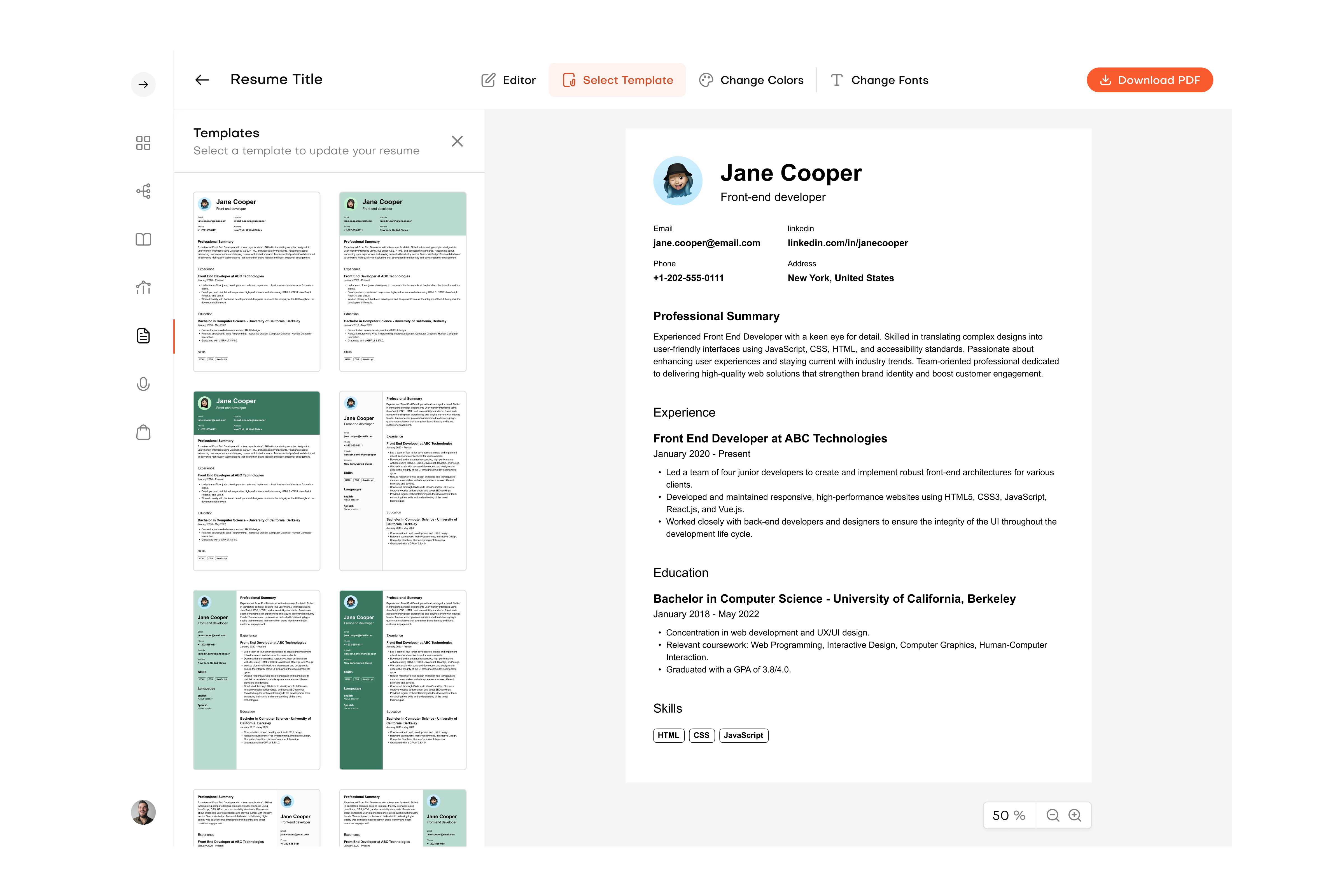
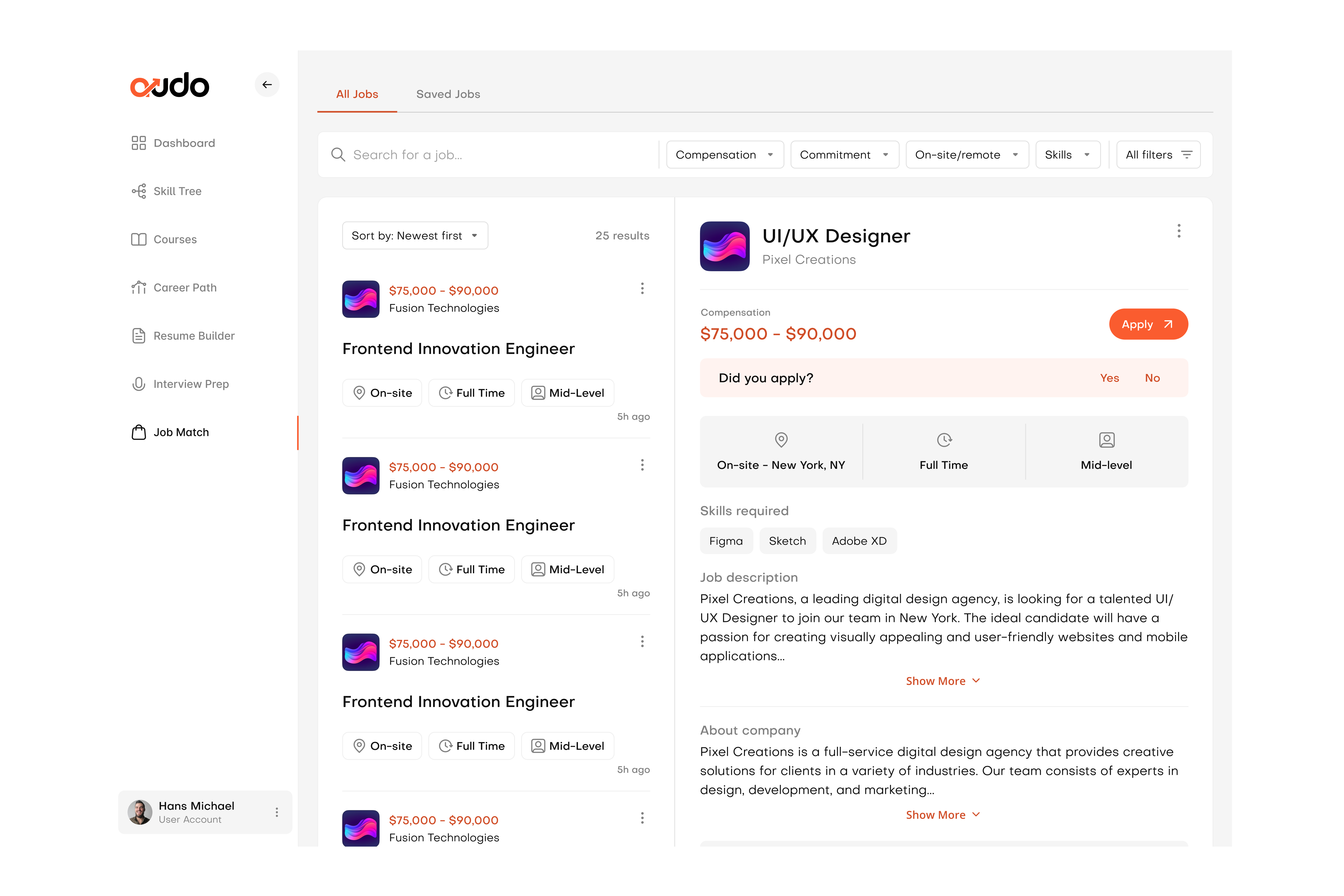
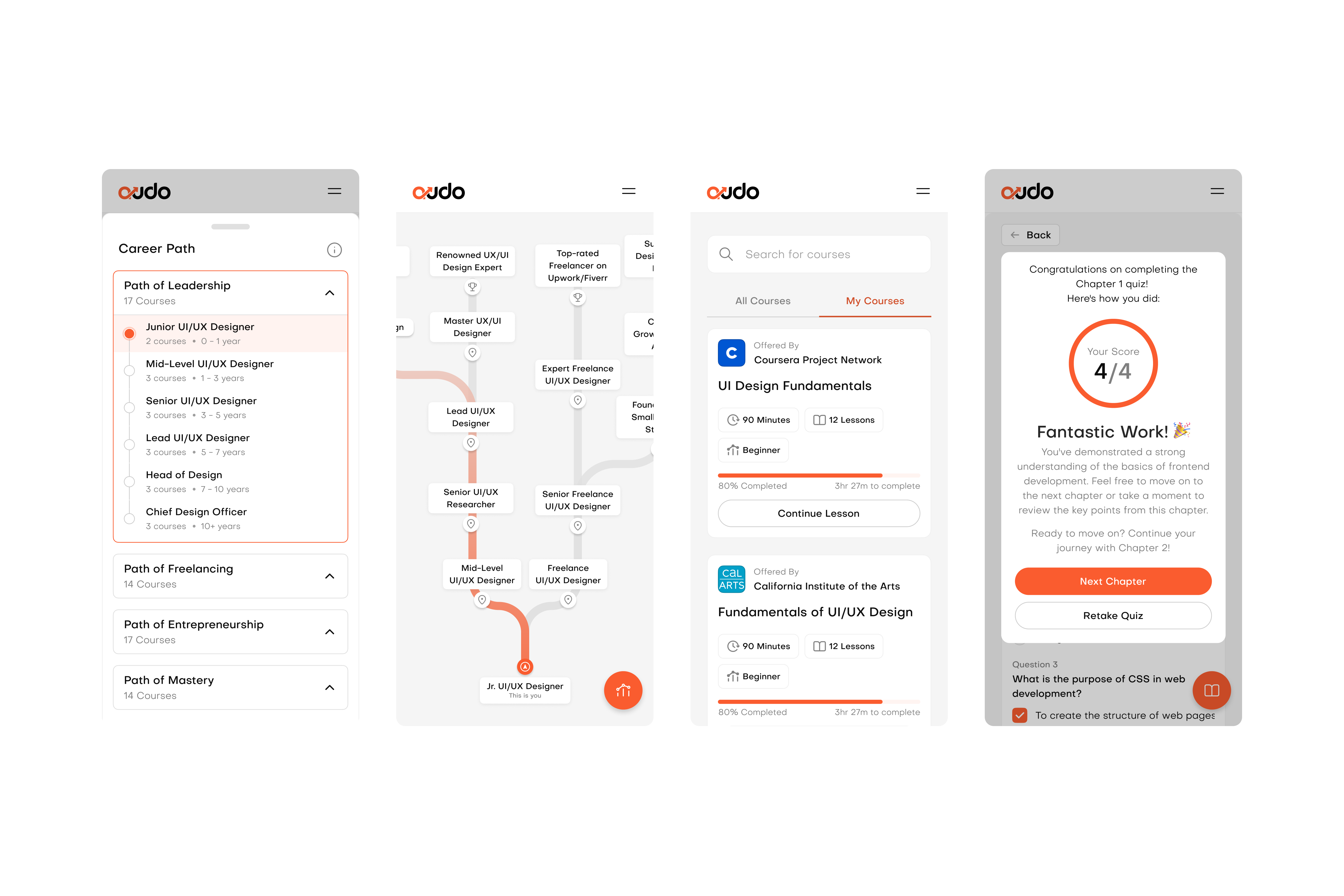
The Audo product design project allowed me to shape the foundation of a platform that helps people navigate their careers with confidence. I grounded my design decisions in user research, focusing on easing career anxiety, creating accessible experiences for a diverse range of users, and ensuring that AI-driven recommendations were transparent and ethically responsible.
Key Outcomes
Through a user-centered approach, I designed onboarding flows, personalized career pathways, and actionable recommendations that gave users immediate clarity and next steps. These design solutions balanced simplicity for first-time job seekers with depth for more experienced professionals, helping users feel supported and in control of their career journeys.
Impact on the Organization
My work addressed core challenges around engagement, confidence, and trust. By making career guidance actionable, accessible, and ethically guided, the platform encourages users to explore skills, prepare resumes, and practice interviews without feeling overwhelmed or excluded.
Strategic Value
Beyond immediate user impact, this project demonstrates how thoughtful design principles can guide the integration of AI in a responsible way. By prioritizing transparency, inclusivity, and user empowerment, I helped lay the groundwork for a platform that is both effective and ethical, setting the stage for future AI-driven features.
